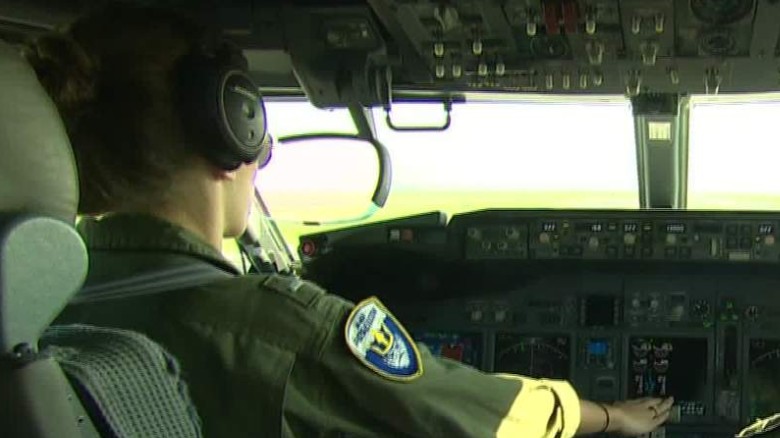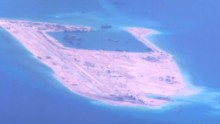Showdown in the South China Sea: How did we get here?
Dotted with small islands, reefs and shoals, the South China Sea is home to a messy territorial dispute that pits multiple countries against each other.
China's "nine-dash line" -- its claimed territorial waters that extend hundreds of miles to the south and east of its island province of Hainan -- abut its neighbors' claims and, in some cases, encroach upon them.
Tensions have ratcheted up as China has reclaimed some 2,000 acres of land in a massive dredging operation, turning sandbars into islands equipped with airfields, ports and lighthouses.
On Tuesday, China said it warned and tracked the U.S.S. Lassen, a destroyer, as it came close to five of its artificial islands in the South China Sea's contested waters.
Cui Tiankai, Chinese ambassador to the United States, told CNN Tuesday that the U.S. patrol was "a very serious provocation, politically and militarily."
Who claims what?
Brunei, Malaysia, the Philippines, Taiwan and Vietnam all dispute sovereignty of several island chains and nearby waters in the South China Sea -- with rival claims to the Chinese interpretation.
To the north, in the East China Sea, China is also locked in territorial disputes with Japan and South Korea.
China is actually relatively late to the party when it comes to occupying territory in the Spratlys, which Beijing calls the Nansha islands.
Taiwan first occupied an island in the archipelago after World War II, and the Philippines, Vietnam and Malaysia followed suit, and all have built outposts and airstrips on their claimed territory, according to Mira Rapp-Hooper, a Senior Fellow in Asia-Pacific Security Program at the Center for a New American Security (CNAS).
The Philippines, which lies geographically closest to the Spratlys, has troops stationed in the area.
China started its occupation of reefs and islands in the area in the late 1980s.
Vietnam also disputes China's administration of the Paracel islands -- and last yearsaw tensions surge as its northern neighbor installed exploratory oil rigs in the region.
READ: Washington 'not provoking' China
What's China been building?

Satellite imagery from 30 March, 7 August 2014 and 30 January 2015 shows the extent of Chinese progress in building an island at Gaven Reefs in the Spratly Islands.
In 2014, China began massive dredging operations centering on three main reefs in the Spratly Islands -- Fiery Cross, Subi and Mischief Reef.
It has reclaimed 2,000 acres in less than two years -- more than eight square kilometers, or around 90 football fields.
In September, during his trip to Washington, President Xi Jinping said China wouldn't "militarize" the islands but is building three airstrips that analysts believe will be able to accommodate bombers, according to satellite images analyzed by the Washington-based Center for Strategic and International Studies (CSIS).
In June, China's foreign ministry said it would soon complete the controversial land reclamation.
However, it also added that it planned to build facilities on the artificial islands it has created and these would perform several tasks -- including military defense.
How has the U.S. responded?
The U.S. government takes no position on the territorial disputes in the South China Sea but it has called for an immediate end to land reclamation.
It also sails and flies its assets in the vicinity of the reclaimed islands, citing international law and freedom of movement.
In May, it flew over the islands, triggering repeated warnings from the Chinese navy and on Tuesday raised the stakes by sending the Lassen to within 12 nautical miles of the reclamations.

Chinese military confronts U.S. spy plane
"We will fly, sail and operate anywhere in the world that international law allows," a U.S. defense official told CNN following the latest U.S. sortie into the disputed zone.
"U.S. Freedom of Navigation operations are global in scope and executed against a wide range of excessive maritime claims, irrespective of the coastal state advancing the excessive claim," the official added.
And while it is currently China that is protesting the U.S. Navy's maneuvers, according to Gregory Poling, director of the Asia Maritime Transparency Initiative at the Washington-based Center for Strategic and International Studies, the U.S. has used these operations to contest claims made by nearly all the countries surrounding the South China Sea, meaning not just China but also the Philippines -- a treaty ally -- as well as Indonesia, Malaysia and Vietnam.
What does international law say?
According to Poling, international maritime law doesn't accord 12 nautical miles of "territorial waters" to artificial islands -- only natural features visible at high tide.
This was the principle being tested by the U.S. Navy when it went within 12 miles of Subi Reef on Tuesday. It called the patrol a "Freedom of Navigation" operation.
Before China's recent land reclamation, both Subi and Mischief reefs were submerged at high tide, while a sandbar was visible at high tide at Fiery Cross Reef, which could make its legal status more ambiguous, he added.
Poling said under maritime law, artificial islands were not usually afforded the 12-mile territorial zone and that the U.S. Navy deliberately chose to send the destroyer near Subi Reef for this reason.
What's at stake here?
The area is potentially rich in natural resources and some areas, particularly around the Malaysian coast and off Vietnam have proven oil and gas fields with billions of barrels of oil and equivalent.
While unexplored, much of the disputed area around the Spratlys is believed to be potentially rich in oil and other natural resources,
It's also about China's position within the region and globally, maintaining control over islands that it claims is its "indisputable sovereign territories," as Chinese officials say.
The current posturing in the area has led to heightened tensions between the world's preeminent military powers, and in May Former CIA Deputy Director Michael Morell told CNN that the confrontation indicates there is "absolutely" a risk of the U.S. and China going to war sometime in the future.
News Courtesy: www.cnn.com











